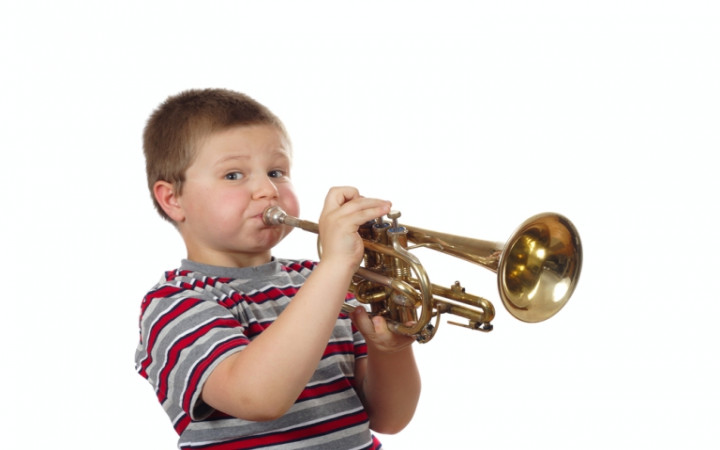Today’s Wonder of the Day was inspired by Santa. Santa Wonders, “How do you play a trumpet?” Thanks for WONDERing with us, Santa!
In France, it’s called a trompette. In Germany, it’s a trompete. If you speak Spanish, you might call it a barrito, barritar, or trompeta. What are we talking about? The trumpet, of course!
Types of trumpets have been around for thousands of years. The instruments date back to at least 1500 B.C.E. Archaeologists even found bronze and silver versions in the Egyptian tomb of King Tut!
Today, most people think of trumpets as only musical instruments. That hasn’t always been the case. Military leaders used bugles—early trumpets—to communicate. Without them, messages may not have reached other sections of a large army.
Have you ever looked closely at a trumpet? It’s an intricate object. It starts with a mouthpiece that connects to a narrow brass tube. The tube continues and curves, ending with a flared bell. The bell of the instrument projects sound.
The trumpet has three valves. Players press or release these while blowing air into a cup-shaped mouthpiece. The valves allow air through small pieces of extra tubing. That’s how the instrument makes different notes.
It may sound easy, but playing this instrument can be a challenge! First, you must learn how to blow air into it correctly. To make sound, you must purse your lips tightly together and let them vibrate as you blow air out. Does that sound complicated? There’s more—you also need to move your tongue at the same time.
Trumpets also need proper care and upkeep. This includes emptying the water that builds up inside the instrument. As you play, moisture from your breath condenses inside. As this happens, it may begin to sound like it’s gurgling. Pressing the “water key” lets the moisture drip out. Some people call this the “spit valve.”
Today, trumpets are common in many types of music. They can be heard in jazz, blues, and even pop music. Would you like to try playing one someday? It can be a difficult instrument to learn. But for many who want to create music, the challenge is worth it!
Standards: CCRA.L.3, CCRA.L.6, CCRA.R.1, CCRA.R.2, CCRA.R.4, CCRA.R.10, CCRA.SL.1, CCRA.W.2, CCRA.W.4, CCRA.W.8, CCRA.W.9, CCRA.L.1, CCRA.L.2




